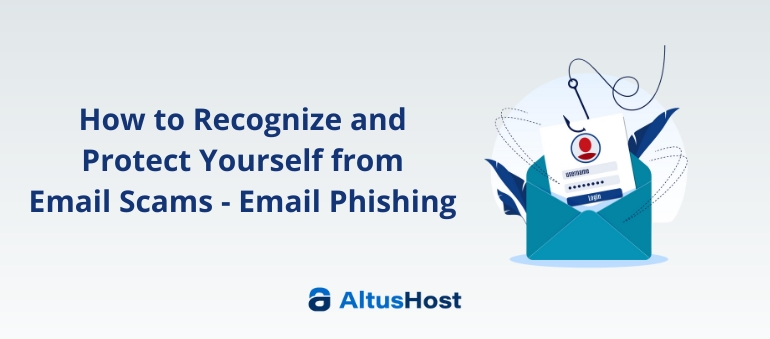Gaining new clients, winning new projects, expanding your prospect base every day is an adrenaline rush almost every new business owner likes. Nothing better than sending tons of invoices at the end of the month, then hopping to another project.
However, this shiny world of endless new projects begins to crumble as soon as you realize that:
- You can’t effectively plan out your budget for the next quarter because there’s no sustainable and consistent income
- Your employees go into burnout mode because they spend too much time on onboarding on top of everyday tasks
- The quality of your work suffers because there are only 24 hours per day and there’s a limit to getting to know every client and his needs
At that moment, you begin to wonder if there’s a way out of this vicious cycle. You wonder if there’s a proven formula that brings peace of mind and stability into a company.
There is and we’ll tell you what it is.
But first, let’s talk about short-term and long-term thinking.
First, You have to Decide Whether You’re a Company that Thinks Long-Term or Short-Term
In the lifecycle of every company comes the turning point where you have to decide whether
- you’re going to keep chasing down every possible lead every single day and sacrifice your ongoing clients, employees, nerves… (short-term thinking)
- Or you’re going to nurture your existing client relationships while sacrificing a huge number of shiny, potentially lucrative deals. (long-term thinking)
Sounds like a no-brainer. In the end, more clients mean more profit.
Even though you burn out and it’s impossible to serve everyone all the time, that’s the only way. To hustle your way up to the top, right?
Wrong.
And it’s not just our opinion. If we look at the numbers, it’s pretty obvious that companies that think long-term win the day.
- Deloitte Research found that companies who tracked customer retention, set loyalty goals, and made efforts to exceed their loyalty goals, were 60% more profitable than those manufacturers who made no efforts to track customer loyalty.
- Studies show that after two purchases, customers were 45% more likely to make a third purchase, and after three purchases, they were 54% more likely to make a fourth.

Still, thinking about winning a new client instead of nurturing your existing ones?
In this article, you’ll find out the key benefits of shifting your internal strategy to investing in customer retention.
You’ll discover why your dearest, long-term clients are your goldmine that will keep your business running for decades.
In the end, you’ll learn just how you can start building your long-term relationships today and use them to grow.
1. Exponential High-Quality Lead and Client Base Growth
Yes, long-term partnerships foster sales and bring your more clients in the long run, without forcing you to do more marketing – because great relationships foster the best marketing strategy ever, and that is – The Word of Mouth.
If the collaboration is satisfying for both sides and lasts for years, that will eventually lead to referrals. People like to share things they’re amazed by.
Now, let’s say your client recommends you to 3 of their partners. You strike a deal, commit to long-term cooperation, strive every day to overdeliver… And then each of those 3 new clients refers you to 3 of their partners.
The math is simple.
- Your client base grows exponentially – 3 x 3 x 3…
- Since you like the client, chances are you’ll like his referrals, which means greater job satisfaction
- Your reputation grows stronger because you deliver high-quality services to high-quality clients

2. Long-Term Partnerships Save Money and Time
Chasing down clients often assume unbillable hours spent on negotiations, preparing contracts, sending proposals… With repeat customers, you save time to provide more output and thus more profits.
Aside from that:
- You save money that you could further invest into improving your customer relationships or getting new leads.
- Marketing to your existing clients is far easier than to cold audience (and selling as well)
- Administration becomes stress-free since you don’t have to learn over and over again how the new client operates
Most companies suggest Retention over Acquisition: investing 80% of your time and resources into keeping your current customers happy while spending 20% to gather new leads.
3. Budget Predictability and a Safety Net
Having repeat business gives you certainty and a safety net, especially in times of crisis like this. At least you know that you’ll be able to pay your workers and cover operational costs.
- First of all, being able to predict the budget in the next 6 months relieves stress, doesn’t it?
- Second, a safety net allows you to make a viable business strategy and know just how much risk you can take at the moment
- Third and most important, you can focus on improving your offer and your services or products

The left one shows sudden bursts of revenue and growth, but great volatility.
4. Repeat Business Does Increase Sales and Reduce CAC in the Long Run
People who buy from you repeatedly bring in more profits than first-time shoppers. Consistently and predictably. There’s always an opportunity to scale up the profits by upselling and adding new things to existing packages.
- Long-term clients tend to spend more and buy more often.
- The success rate of selling to a customer you already have is 60-70%, while the success rate of selling to a new customer is 5-20%.
Besides, it’s more expensive to onboard new clients than to keep the existing ones.
- Study shows that acquiring a new customer can cost anywhere between 5 and 25 times more than retaining an existing one.
- A study conducted by Bain & Company found that a 5% increase in retention rate can lead to an increase in profit between 25% to 95%.

5. Long-Term Customers Become your External R&D Team
In the world of a customer-centric economy, knowing the needs of your audience and meeting them is crucial. Most businesses (at least the successful ones) strive to improve their products and services over time.
That’s why they invest in research and development.
Making that investment is however very expensive and not many companies can afford it. That’s why many decide to sacrifice research and experiment directly on the market.
Make-profits-or-die-trying tactic.
While this is a viable tactic and the market gives you many insights, it’s risky and can also drain your budget fast leaving you without any useful data.
Luckily, if you’re investing in your long-term relationships, you don’t need to invest massively in research because you’re sitting on a research goldmine.
That’s right. Your long-term clients are the driving force that gives you valuable insights.
- Since you have close relationships and great results together, you can ask for feedback any time you want. Make sure to provide incentives and rewards, of course. After all, they’re actively helping you.
- You know their day-to-day struggles, so you’ll know what to ask, and how to measure improvements.
Your long-term clients are the external research department that gives you feedback and insights needed to improve, grow, and earn more.
How to Establish Long-Term Client Relationships
There are many strategies for building satisfying collaborations and long-term partnerships, but most of them revolve around these three:
Invest in customer service
Always there for you shouldn’t be just a vague tagline on your website. Especially if you know that 89% of customers will make another purchase if they had a positive experience with the customer service.
Be it a call center, a knowledge base, or email support, make sure to hear out the problems and provide quick solutions.
Implement brand loyalty programs
Reward your loyal customers. 75% of customers prefer companies that have loyalty programs.
Send gifts, offer discounts and coupon codes, give out vouchers…
Show them that you appreciate their commitment to your brand.
Do regular market surveys and improve
You can’t know what or where to improve if you’re not listening to the voice of customers.
- Send regular surveys
- Put small pop-up surveys on your website
- Give discounts to people who participate in interviews
- Use focus groups
Finally, use that data to find out where you’re the best, and where you could improve. That will make your customers feel appreciated, valued, and happier.
To Conclude
Running a profitable business is a long struggle to find a balance between bringing in new clients and keeping the existing ones happy. If we were to bet on a successful strategy, we’d put all of our money on 80% retention – 20% acquisition.
Hopefully, you’ve learned the nuts and bolts of a customer retention strategy. If you liked it and would like to help your business partners shift their mindset, please share this article with them on social media.
If you have any feedback, share it with us in the comments below, we’d like to hear from you!



